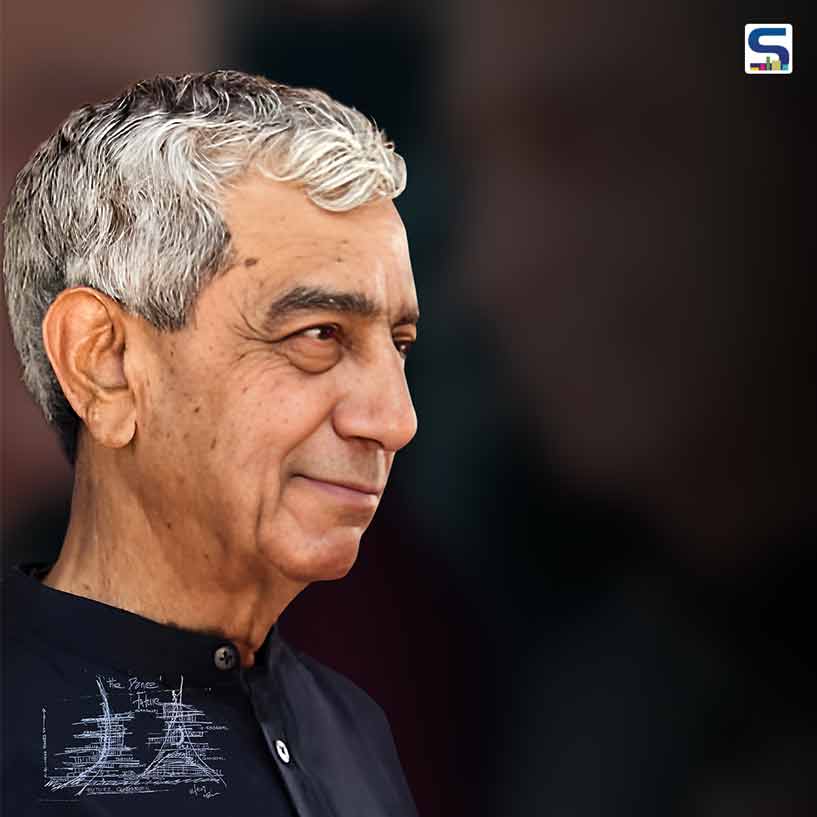
In a special conversation with Maddhu Chaudhury, Executive Editor, SURFACES REPORTER® (SR), veteran Indian architect, educator, and founder of Jaisim Fountainhead, Krishna Rao Jaisim retraces a life shaped not by formulas, but by fearless choices. From walking out of interviews and cricket dreams to founding an award-winning practice and mentoring generations of independent thinkers, he reflects on architecture as a deeply personal and philosophical pursuit- where structure meets spirit, stories matter more than blueprints, and building with instinct and integrity becomes a way of life.
"I told all the youngsters, you start. So the firm, Fountainhead, grew and grew. I let all my youngsters start their own firms. I said, Don’t work with me. You go work on your own. Now. You are on your own journey."
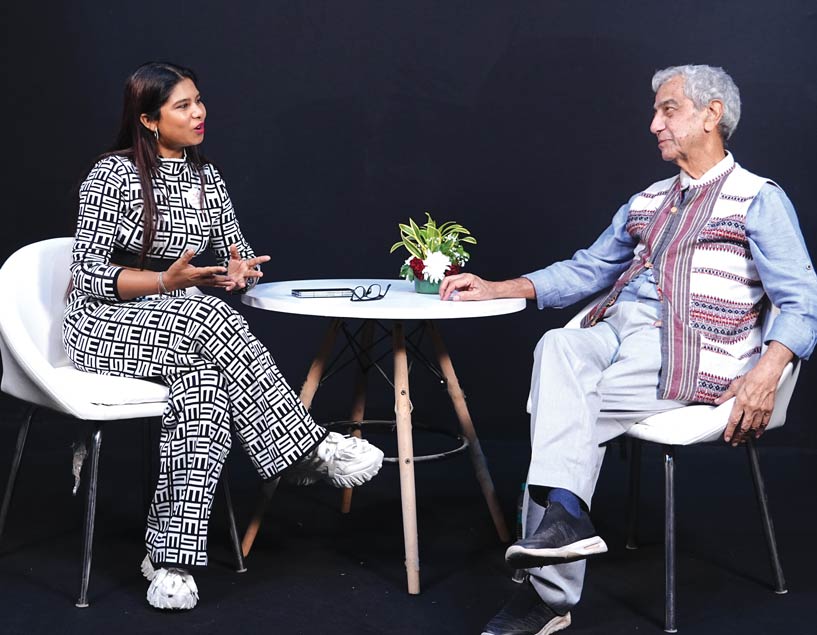
Could you take us back to where your architectural journey began?
Somewhere in the 1960s, when I was getting out of pre-university college, my father and my mother asked, “So what are you going to do?Go to college?” I said, “I don’t know.” My mother asked “Why don’t you take up architecture?” as her father H S Lakshminarasappa was the architect of the Mysore Maharaja.
It seems your grandfather played a pivotal role. How did that unfold?
My grandfather inspired me. He said, “None of my children have done architecture. Why don’t you do it?” I replied, “I don’t even know how to spell it.” My mother just smiled. I was a very naughty fellow who loved to sketch and play with spaces, and I enjoyed playing cricket. I wish I had continued with cricket and played for the country, because I knew very well many of those who later became top cricketers.
The Madras School of Architecture became a turning point. What’s the story behind your admission?
There was a call from the Madras School of Architecture, which was part of Guindy Engineering College, for an interview. No one told me what it was about, so I assumed it was for Mechanical Engineering. When I reached the AC Tech campus, someone said, “Come.” I asked, “Come where?” They said, “Technology.” I replied, “I’m not interested.” My father’s driver had dropped me off, and I was only there because there was supposed to be an interview. I said, “I don’t like interviews anyway,” and just walked in. One of the professors said, “You are so-and-so.” I don’t know what got into me, but I responded, “You’re calling me here just because I’m so-and-so’s grandson? Thank you very much,” and walked away.
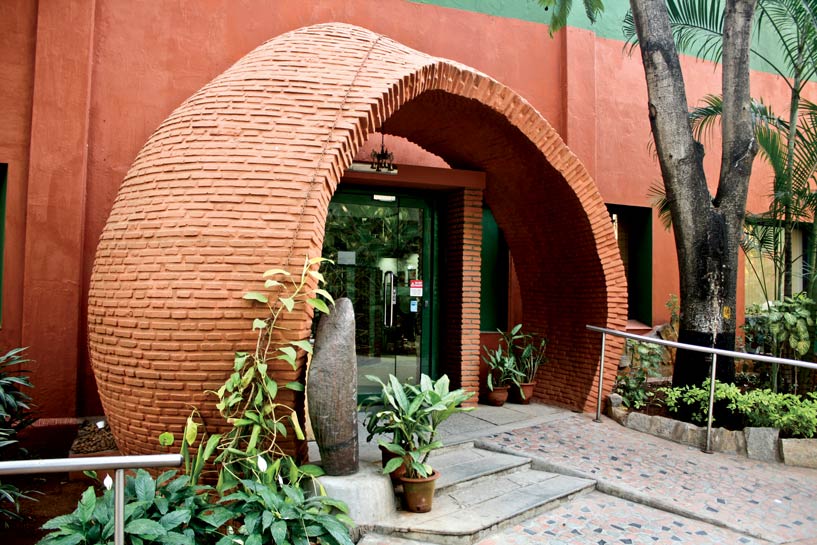
ITC Infotech, Bengaluru
You walked out of the interview? Just like that?
Nothing. I just walked out - believe it or not. Then they called my mother or father and said, “He has been selected, because he’s the only fellow who walked away.”
" I wouldn’t attend any other class. Then, when Professor K. N. Iyengar came in, he began talking about history and culture. I loved the way he narrated history - connecting British history and Liverpool in ways that fascinated me. I enjoyed listening, but I wouldn’t write the exams. Somehow, they kept passing me up to the third year."
What was your experience like once you joined the school?
There was an art class where I loved to sketch, and the artist became a great source of inspiration for me. I wouldn’t attend any other class. Then, when Professor K. N. Iyengar came in, he began talking about history and culture. I loved the way he narrated history - connecting British history and Liverpool in ways that fascinated me. I enjoyed listening, but I wouldn’t write the exams. Somehow, they kept passing me up to the third year. Then they finally said, “Now you must write an exam.” I replied, “I won’t write. I don’t know how to write. I can’t.” But somehow, they pushed me into the fourth year - and that’s where the fun begins.
Your thesis became quite controversial, didn’t it?
My professors told me that I now had to write a thesis. At the time, my brother was working at The English Electric Company in Chennai, a very large organisation. So I decided that my first thesis would be on setting up electrical factories. I wrote the thesis and presented it, not knowing that the architect - who was also part of my jury - was the one who had designed that factory. Ironically, my first two paragraphs were sharply critical of how poorly the building had been designed. I genuinely believed it should never have been done that way; there was a much better approach. He failed me.
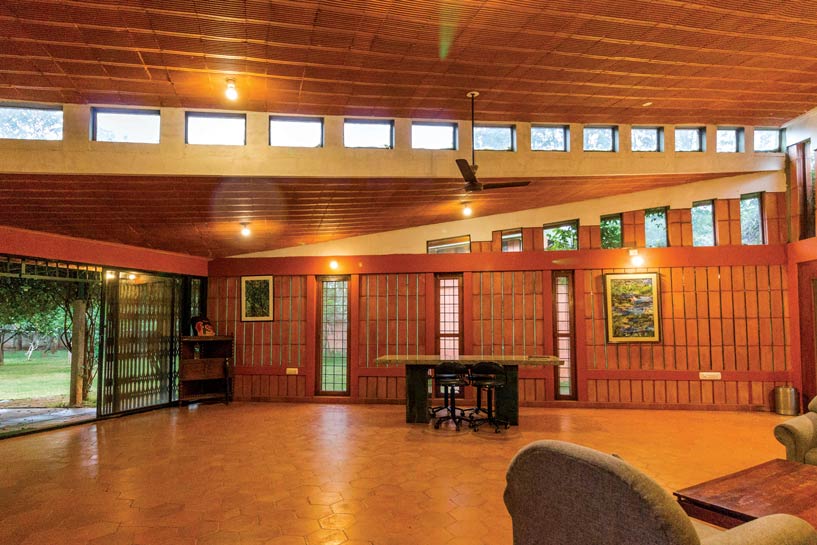
Interiors of the Courtyard House,Bengaluru
After such a rocky start, how did you transition into professional practice?
A similar thing happened with my next thesis - a tourism project. Around that time, I knew someone who was studying tropical architecture, so I decided to write my thesis on tropical studies. Meanwhile, I had to go to an office for my internship.Interestingly, the same jury member who had previously failed me asked me to come and join his office. Instead, I asked a senior, “Who is his biggest competitor?” They gave me a name, and I walked straight into that office.
The Principal Architect called his secretary and asked, “Who is this?” Initially, he thought I was a client. She replied, “No sir, he has come to work.” Luckily, one of the architects working there - who was also my senior - saw me and said, “Jaisim, what are you doing here?” I said, “I’ve come to work.” He said, “There’s no place in the office, but I’ve asked for a spot.”
S. L. Chitale smiled and said, “There’s no place in the office. Where will you sit?” I replied, “Wherever you ask me to.” He said, “There’s no place. Go to the site.” Believe it or not, going to the site - and site after site - taught me far more about architecture than I ever learned anywhere else in my life.
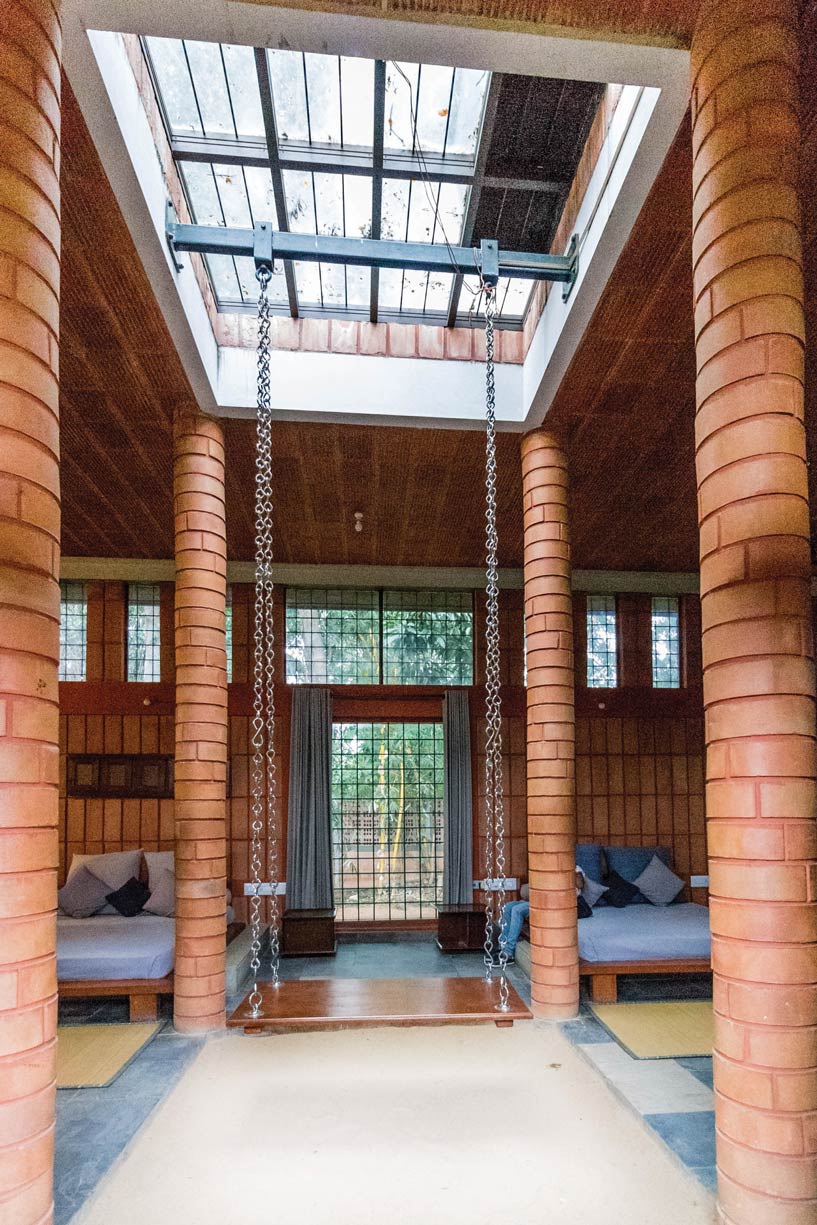
Proper ventilation ensures The Courtyard House remains well lit
What inspired you to start your own firm, Fountainhead?
At the same time, my brother gifted me the book Fountainhead, which had a profound impact on me. Four years later, when S. L. Chitale said, “I’m going to promote you,” I replied, “No, I’m resigning. I won’t be coming to the office from tomorrow.” That’s when I started Fountainhead - my own firm, launched from my father’s garage. Soon after, a man handling one of the biggest projects under Chitale approached me and said, “I heard you left. I want you to take over the project.” I told him, “Sir, that’s his project.” He replied, “Okay then, do something else for me.”
At the time, I didn’t realise he was one of the most prominent figures in Indian shipping, and the Cochin Shipyard was all theirs. His name was Syed Yusuf. He said, “Okay, do one project for a ship,” and would take me on board ships and even in helicopters. I was thrilled and gladly took on the project. Believe it or not, it went on to win an award entirely on its own merit.
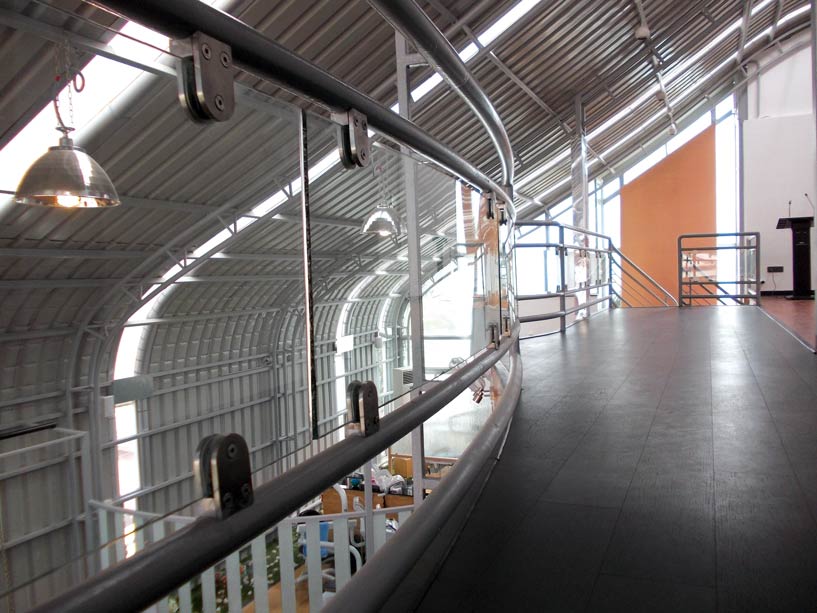
Lalitha Dental Speciality Centre, Jayanagar, Bengaluru
Your career took you to Oman unexpectedly. How did that chapter unfold?
Syed Yusuf and Syed Ibrahim said, “You have to fly tomorrow.” I said, “To where?” “To Muscat in Oman.” I replied, “It’s a place I don’t even know. I don’t have a passport.” Believe it or not, the next morning, in front of me, was a passport and a visa to the Sultanate of Oman. I flew - it was supposed to be a one-week visit. I had redesigned their project and said, “Now, I’m going back.” He said, “You can’t go back. You have to finish another project.” I said, “My wife is in India.” They asked, “What is she doing?” I said, “She’s a banker.” They didn’t say anything then.
Days later, they asked me to come to the airport. I went there, and to my surprise, Geeta was walking down the steps. “What are you doing?” I asked. She said, “I thought you sent me the ticket, you sent me the visa. I came.”
The moment she arrived, we spent a week walking around the Sultanate of Oman and other places. A very big organisation - Larsen & Toubro, ITC, Shapoorji Pallonji - were my biggest clients and wanted me to stay. I said, “My wife is a banker. She has to go back.” The very next day, they offered her a job by starting the Bank of Muscat & Oman. Had we continued, we would have been billionaires.
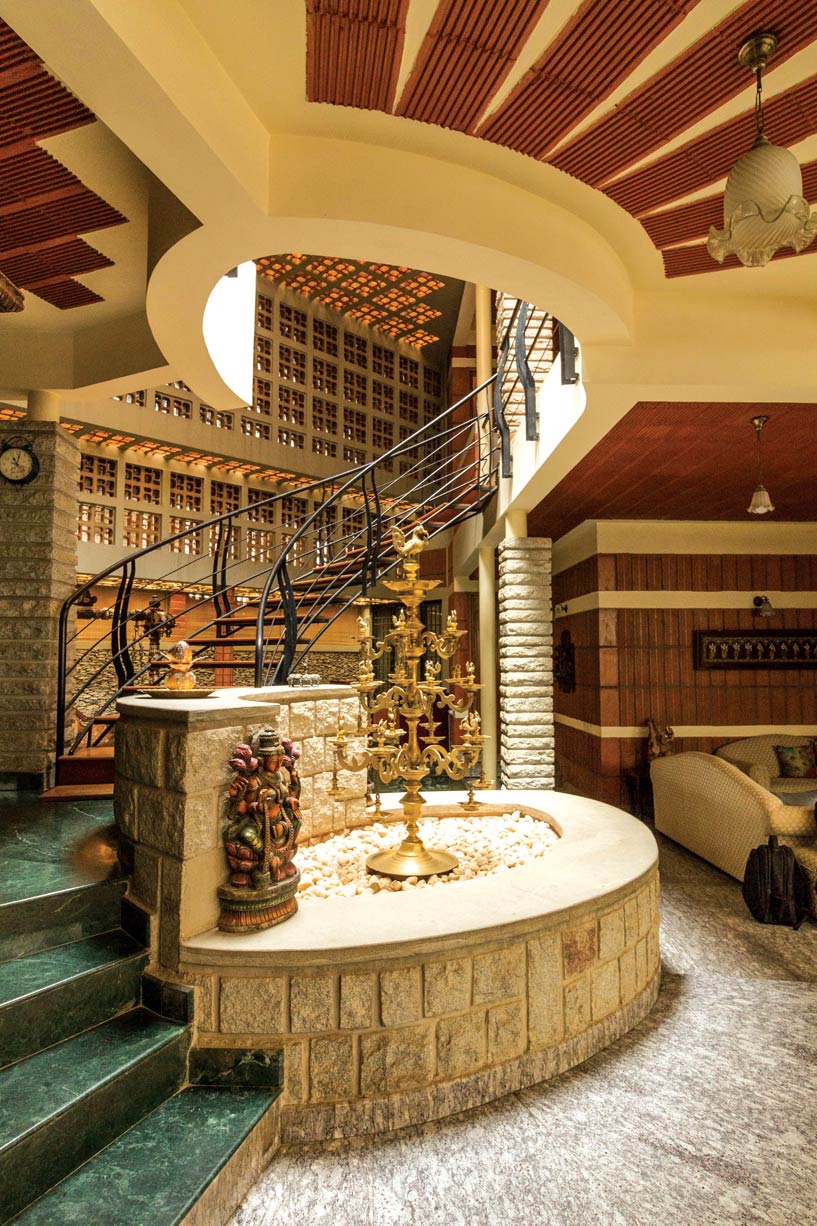
Hegde Residence Bengaluru
"Four years later, when S. L. Chitale said, “I’m going to promote you,” I replied, “No, I’m resigning. I won’t be coming to the office from tomorrow.” That’s when I started Fountainhead - my own firm, launched from my father’s garage."
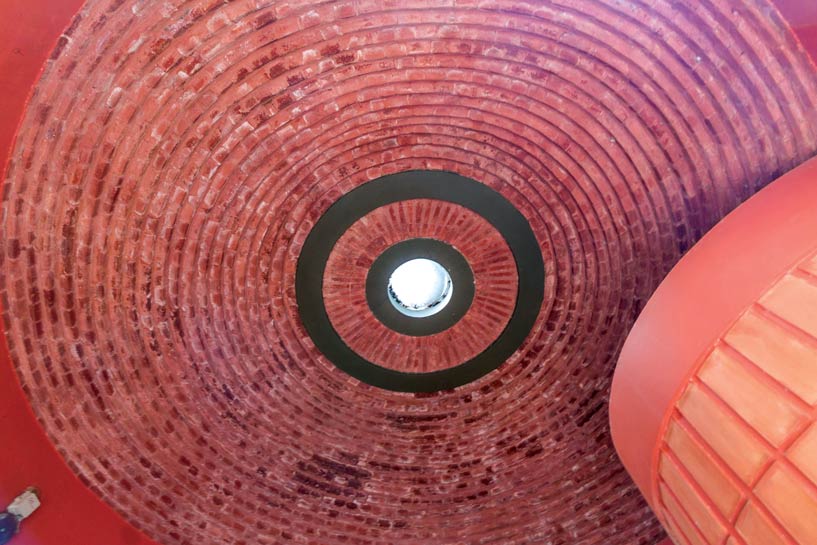
A ceiling with concentric patterns, at The Courtyard House, Bengaluru
You’ve always encouraged young architects to forge their own paths. Why is that so important to you?
I always told the youngsters, “You start.” That’s how Fountainhead kept growing. I encouraged all of them to eventually start their own firms. I’d say, “Don’t keep working with me. Go out and build something of your own. Now, you’re on your own journey.
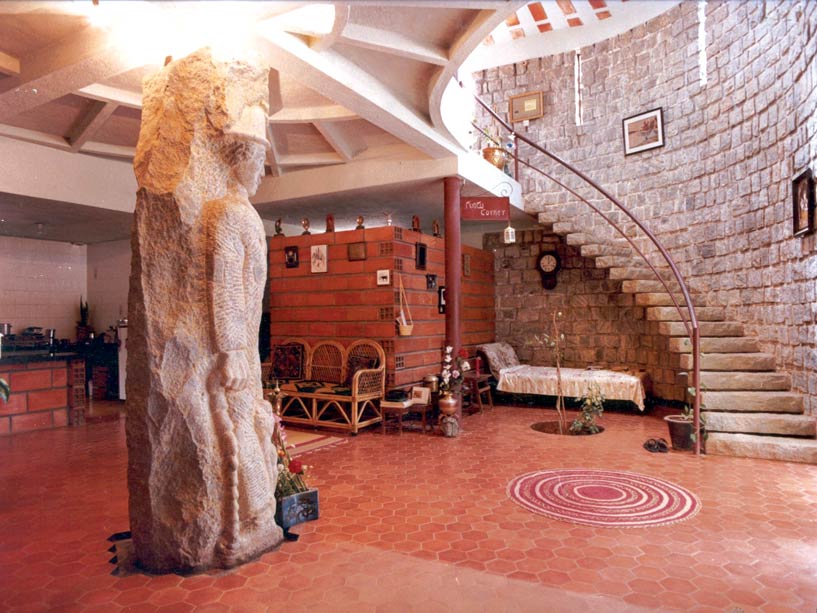 CR Simha’s ‘Guhe’ Residence, Bengaluru
CR Simha’s ‘Guhe’ Residence, Bengaluru
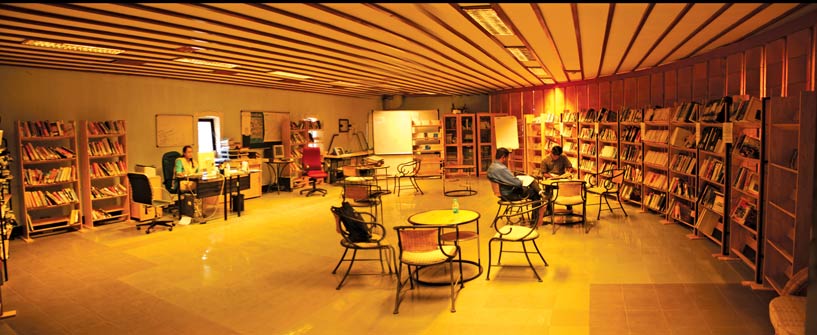
The Library at ITC Infotech, Bengaluru
Looking back, do you feel destiny played a role in your becoming an architect?
You’re not wrong. I used to love playing with the Meccano set. I’d break it down and rebuild it. Then my brother would buy a car, and in the morning he’d find me tinkering with it. “What are you doing?” he’d ask. “Just opening it up and seeing what’s inside,” I’d reply. He said, “You’re very good at mechanics.” Then in the evening, I’d sit and start sketching. That was art - this was structure. I would even go racing. The Sholavaram racing track was designed by me. The horse racecourse was designed by me. I didn’t even know how horses run or how they’re trained - I just sat there and observed. And he said, “You’ve done the job.” Even today, the racecourse is functioning. Even the yacht club continues to function I don’t put my name anywhere.
But now, that combination - art and structure - when fused, becomes architecture. And it’s a journey. Structure by itself can build, but it doesn’t know what it’s building. Art by itself cannot exist. Unless you fuse structure and art, architecture cannot happen. And without architecture, human life doesn’t exist.
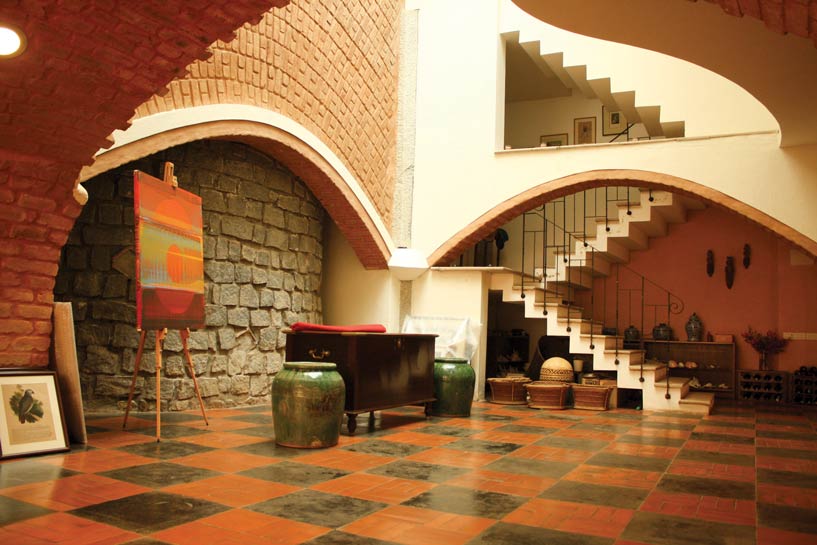
Naresh Ponnappana Residence , Bengaluru
What’s your message to the younger generation of architects and designers?
Since morning, I’ve been walking around the college - people catch you everywhere. I said, be bold. Look at space with nothing in your head, and everything in your spirit. This was something I learned from J. Krishnamurti of the Valley School when we were designing together. Walk the path nobody has walked before. And when you walk that path, you’ll discover an adventure beyond all boundaries. But your language must be clear and evident - you cannot walk without language.
Here’s the last line I would leave you with: You can know letters. Letters can form words. Words can form sentences. Sentences can form paragraphs. Paragraphs can form chapters. But even then, they don’t make a story. When you create a story - that is architecture. You need a hero. You need a heroine. You need a villain. You need a story. You need an adventure. That is the real story. This, I learned from Ayn Rand’s The Fountainhead.
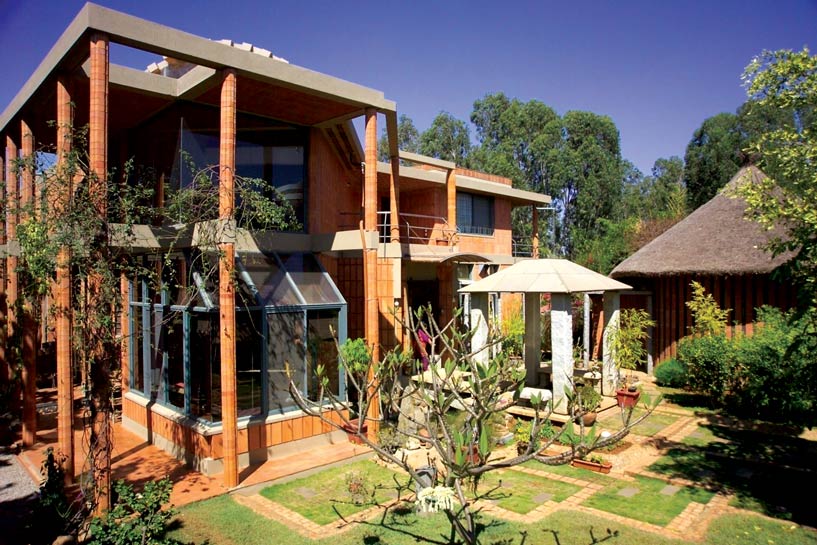
Suresh Gupta’s Residence, Bengaluru
Finally, what does your association with SURFACES REPORTER® mean to you?
To SURFACES REPORTER, I say this: it was always easy to write in journals, but journals are rarely read. Magazines attract attention. But when it comes to hardcore reporting, The Times of India, The Hindu - they would have me write articles every month or every week on architecture. Still, I always felt there had to be something more definitive. You people achieved that, and that’s very important. Journals like IAEA are good, but what truly matters is the combination of a strong publication house, the vendors, and the people. The vendors and the advertisements make a big difference. And then, it gives architects the opportunity to explore - to explore through written language. Surfaces has done that, going beyond the surface.
DESIGNING WITH WONDER: MY JOURNEY WITH AR. JAISIM
Architect Prathima Seethur recalls the transformative influence of Ar. Jaisim - mentor, visionary, and the mind behind experiential, environmentally conscious design.
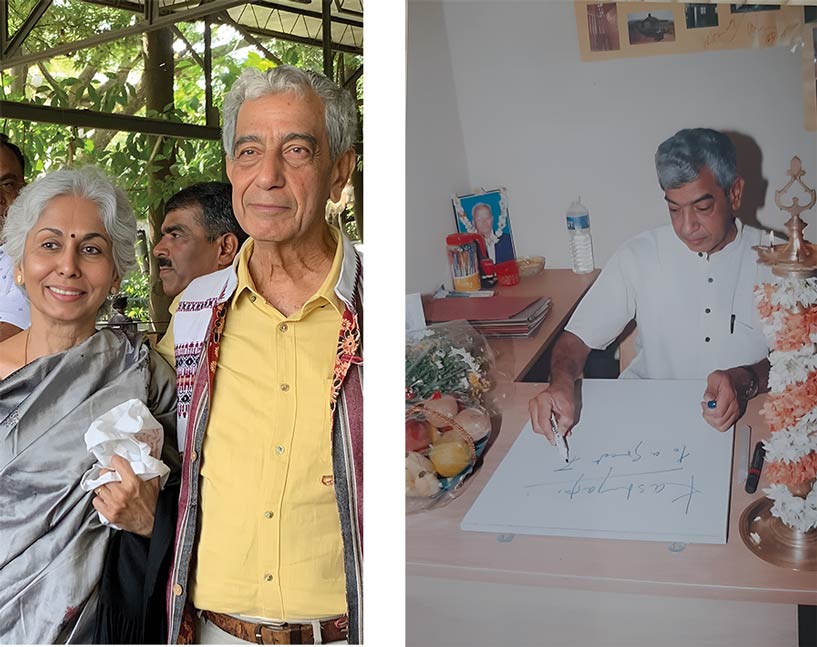
He stands curiously, questioning every single thing and choosing to stand out and do things differently-each time and every time.This best describes Ar. Jaisim, a brilliant human, an outstanding architect, and an inspiration at all times. It has been amazing to watch him closely and observe how meticulously he approaches every single thing on a daily basis, irrespective of the importance he attaches to the activity. Always buzzing with energy and enthusiasm, Jaisim Sir decodes complex scenarios into simple resolves at all levels.
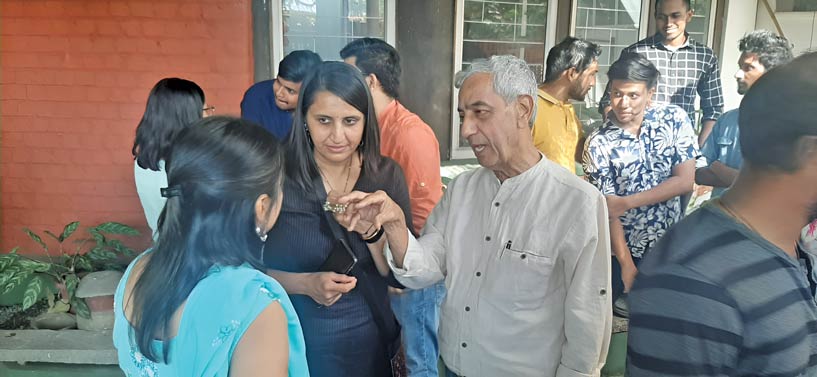
Architect Prathima Seethur with Ar . Krishna Rao Jaisim
I first met the brilliant architect at my architectural school, when he was invited as the jury. He went on to appreciate the experimental approach in my design process and encouraged me to go all out-questioning every minute context and exploring beyond boundaries. This connection made me curious and led me to follow his works. Later, I approached him during my explorative architectural career journey.
Even at the job interview, I remember clearly what he told me: “Get your own chair, find your own place,” which meant that there is so much to learn as long as you make an effort.
Work was like a dedicated meditation that required a lot of focus-each time being challenged and expanding to whole new levels.
Each day was a whole new level of learning-decoding design and details through conversations, sketches, and site visits.I noticed that I grew as a person, transforming into someone bold and courageous. I noticed a shift in my mindset, and I was personally shaping into a better person as each day progressed at Jaisim Fountainhead.
Jaisim Sir is an inspiration-a master architect. He has always been realising projects that would start with wonder and leave one in wonder.What is remarkable to me is his approach to creating experiential spaces while being environmentally conscious at every opportunity.
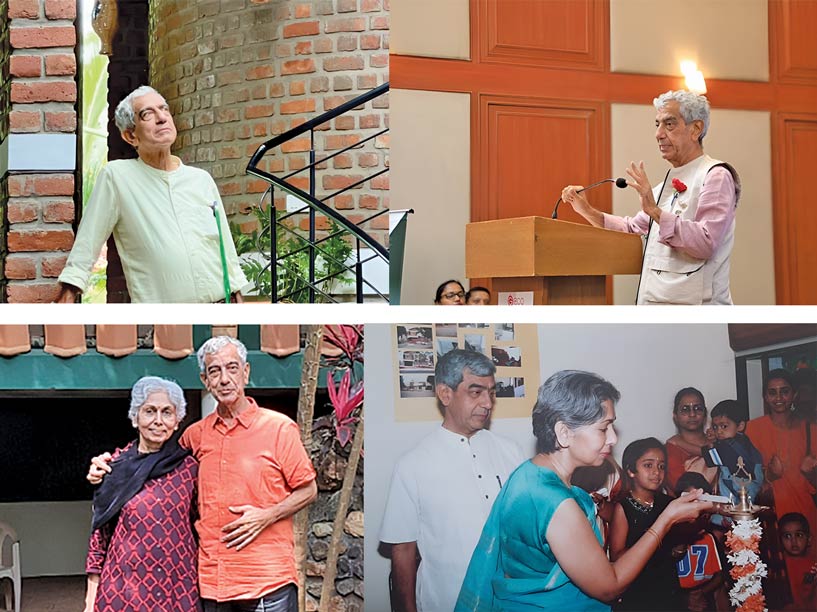
Jaisim Sir has instilled in many youngsters and young practices the spirit of creating imaginative, experiential spaces that leave one in awe.
He has always encouraged each one to evolve as their individual best-and today, we have so many practices that have sprung up, carrying forward the ideologies of Jaisim Fountainhead. A man of grit, perseverance, enthusiasm, wonder, and grace-he always strives for excellence and fun. Prof. Jaisim is a father figure and the guiding light in my career journey-and always an inspiration.
Ar. Prathima Seethur Principal Architect, Wright Inspires India Architects, Engineers, Ecologists, Interior Designers.